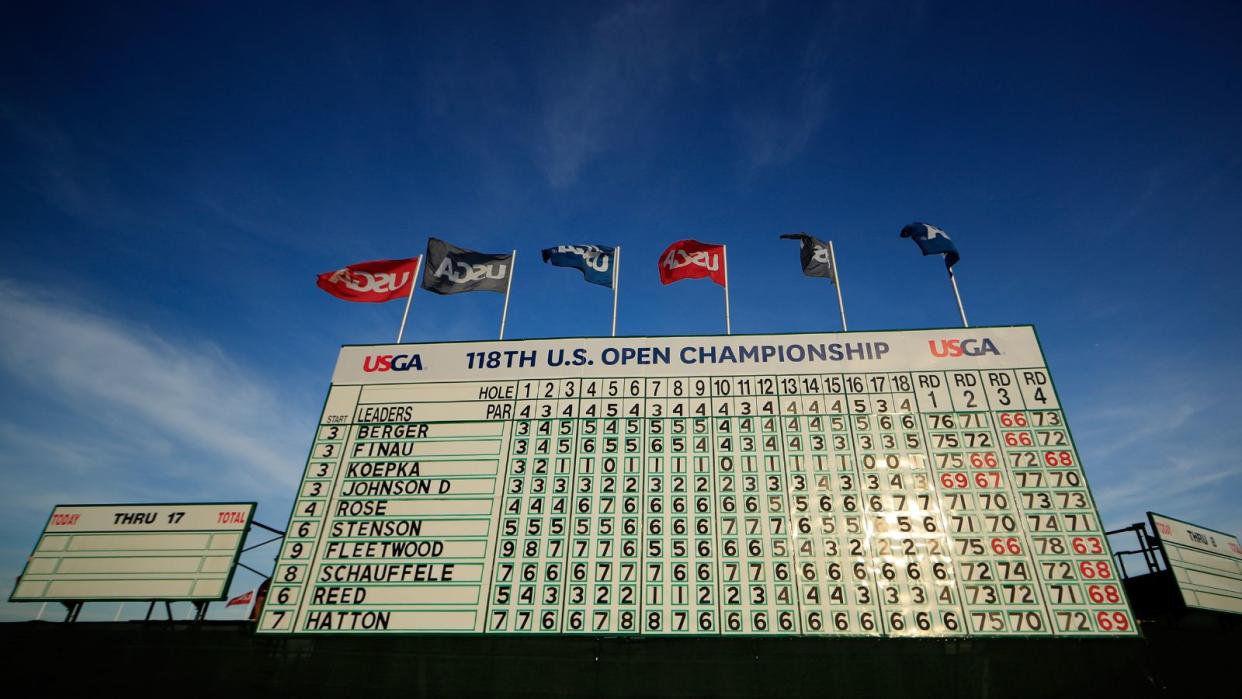US Open Cut Explained: How Many Golfers Make It Through To The Weekend

The US Open is historically one of the most difficult golf tournaments to win in the world.
Only the best of the best can triumph, with past winners of the tournament including some of the most illustrious names the sport has ever seen. And while winning is the prize everyone wants, even just making the cut can be hard enough in itself.
You're competing against a field of over 150 exceptionally talented golfers, who are all vying to book their place in the weekend's proceedings.
Equally, you also have to beat the course, which at the US Open, commonly dubbed 'golf's toughest test', is no easy feat.
In fact, while the Masters may technically be the hardest to win because of how difficult it is to qualify for the smallest field in Major golf, the US Open really is one of the trickiest to play when you factor in how difficult it is to score around some of the courses, and setups, it is played at.

From Torrey Pines to the Winged Foot Golf Club, the US Open is played at some of the hardest courses in the country and that adds to the pressure that comes with making the cut.
The cut is one of the most unique and historic parts of golf that is rarely seen in other sports around the world. It plays a huge part in building the drama around the Major, with big names often finding themselves dropping down in the leaderboard, in danger of falling shy of the cut line.
So how is the cut calculated?
What is the cut rule at the US Open?
The top 60 (and ties) make it through to the weekend at the US Open, meaning the the field is usually cut by over 50% after 36-holes.
The most ever players to make the cut at the men's Major came in 1996 at the Oakland Hills Country Club, where 108 players advanced through to the weekend as Steve Jones moved through the field to win his sole Major title.
In 2022, the cut at the Brookline Country Club was set at +3 and some big names missed out. Viktor Hovland, Hideki Matsuyama, Phil Mickelson, Shane Lowry, Sergio Garcia and Louis Oosthuizen all dramatically failed to secure a spot in the weekend's proceedings.

The oldest player to ever make the cut at the US Open is Sam Snead, who in 1973 finished T29 at the tournament at the age of 61. Tom Watson and Jack Nicklaus both followed him, both having achieved the same feat at the ages of 60 and 58, respectively.
The youngest player to make the cut since World War II was Beau Hossler in 2012, who was a mere 17 years and three months old when he finished T29.
Nicklaus had also previously held that record too, making the cut at the tournament when he was 18-years-old.
Do you get paid if you miss the cut at the men's US Open?
Interestingly, unlike many PGA Tour or DP World Tour Events, players at the men's Majors who fail to make the cut still do get paid.
In 2020, those who missed the cut were paid $10,000 for 36-holes of golf, while amateurs were not remunerated.
While they did miss out on the big prize pots from the US Open prize money that those who go on to make the weekend will obtain, that is still a pretty handsome amount of cash that will cover their expenses to play in the tournament.
And while you may be wondering why players get paid for failing to make the weekend, USGA chief executive Mike Whan clarified the position of why players are rewarded for taking part.

"We pay you even if you miss the cut because we really believe that making the cut at the US Open is getting one of these 156 [spots]," Whan said ahead of the 2023 tournament. "Think about it, of 10,200 [who attempt to qualify], only 156 are here."
That is a just reward for the hard work players put in to earn a spot at the illustrious championship.
The situation differs slightly at the Open Championship, where players are paid on a sliding scale, while the PGA Championship pays golfers significantly less, with those missing the cut earning $3,200, according to Golf News Net.

